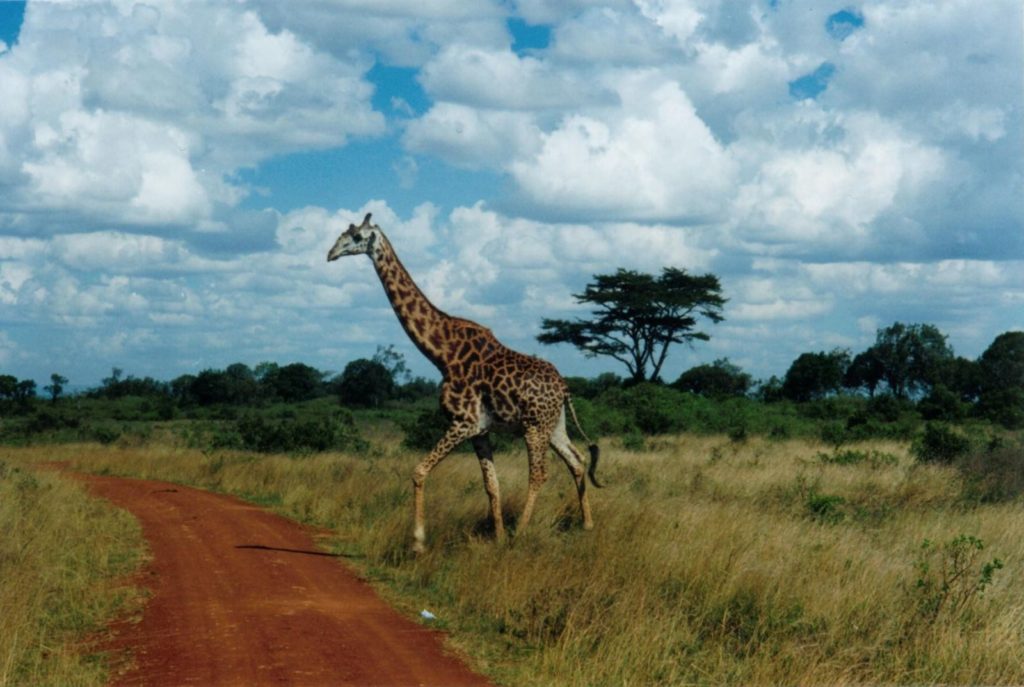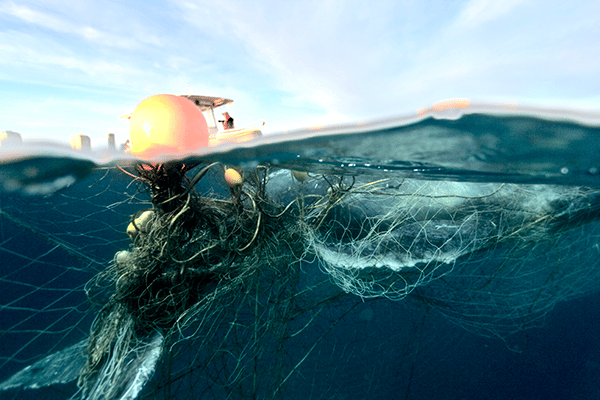After no less than fifteen whales, including at least four calves, have been through the trauma of entanglement in the Queensland Government’s shark nets during this humpback whale migration, Queensland Premier David Crisafulli insists on defending these nets and making false claims that they work for public safety. These assertions...
This year a clarion call is being sounded for the giraffe, whose situation is now in such jeopardy that we are calling for its listing under the Convention on International Trade in Endangered Wildlife (CITES).
The CITES Conference of the Parties (CoP) comes around every 2-3 years and is when governments party to this critical UN convention meet to determine the fate of internationally traded wildlife. Humane Society International is one of the leaders in the fight for the future of those animals which have the misfortune to have a price on their heads; or horns, fins or skins, or whichever body part it is that people desire for their trophies, trinkets and dubious medicines.
The terrible plight of the giraffe will be a feature of the 2019 CoP which will be held in Geneva in August this year.

For many people this will be a shock. Not so long ago, giraffes were ubiquitous on the plains of Africa and few of us could have imagined their numbers to now be so depleted that they are joining the ranks of the endangered.
Of all the proposals HSI is preparing to campaign for at CITES agenda it is perhaps the giraffe that makes me feel the saddest. Our unrelenting human impact on nature is now so profound we are robbing future generations of even the more common species.
In 2010 the IUCN Red List classified giraffe to be “Least Concern”. Whereas in 2016 the situation had deteriorated so badly it was upgraded to “Vulnerable” to extinction with population decline between 36% and 40% over the last 30 years. Fewer than 100,000 giraffes remain in the wild, and the declines are ongoing.
Hence, the urgent need for CITES to step in. The giraffe has lost large swathes of its habitat to human development and too many animals are dying for the bush meat trade, but they also under pressure from an international commercial trade in its skin, bones and tails for jewellery, carvings and other trinkets. Giraffes are strikingly beautiful animals, with distinct patterns and long legs and necks. Unfortunately, that beauty has also made them a ‘new exotic’ and sparked a market in giraffe leather, bone and trophies. It is CITES job to address this international trade.
A HSI investigation has uncovered a thriving international trade in giraffe body parts. We found that 4000 giraffes killed by trophy hunters were imported into the United States over the last decade. Close to 40,000 giraffe specimens were imported into the U.S. during the same period. Products most commonly on sale includes giraffe knife handles, Western boots, furniture, taxidermy and even bible covers. Products ranged in prices from $8,000 for a partial giraffe taxidermy trophy to $10 for tail-hair bracelets.

We are grateful for the leadership of the governments of Chad, Senegal, Niger, Mali, Central African Republic and Kenya who submitted the giraffe listing proposal to give this threatened animal much needed international protection from this demand. With the views of 183 counties to balance, CITES is a frustratingly conservative convention. While Humane Society International would like international trade to be banned, the request that has been made for giraffes is necessarily modest, seeking an Appendix II listing which would regulate, rather than outright ban, the international commercial trade of giraffe specimens.
Humane Society International plans to give the proposal our full support. We will be speaking with governments the world over ahead of the meeting asking them to vote for the listing in Geneva. It’s the least governments can do and is essential for this species to have a future on the African plains.
Stay tuned to our blog for news of other animals to be fought over at CITES, including a proposal to protect the woolly mammoth, even though it’s been extinct for thousands of years, in order to help save its elephant cousins.
Nicola Beynon is our Head of Campaigns in Australia and has twenty five years of experience campaigning in the Australian and international animal protection movements. She first joined HSI in 1998 and has spent a total of 15 years with the organisation. She has also spent time working in the NSW parliament as a policy advisor to an upper house MP and spent three years with World Animal Protection. Nicola has championed wildlife protection at many multi-lateral environment meetings including the UN Convention for Trade in Endangered Species CITES, Convention for the Conservation of Biological Diversity (CBD), Convention for Migratory Species and the International Whaling Commission (IWC); often as an adviser on Australian government delegations. Career highlights have been negotiating Australia’s national environment laws in 1999, securing protection for a ‘million acres’ of threatened wildlife habitat, taking the Japanese whalers to court and winning, working with the Australian Government to instigate international agreements for albatross and sharks, and protecting great white sharks from the global trade in their jaws and fins.
Header image: Michael Simmons


